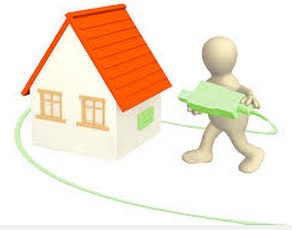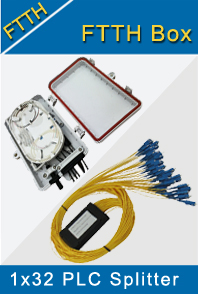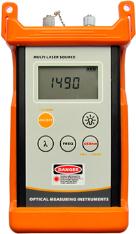-

- Sopto Home
-

- Special Topic
-

- FTTH Knowledge
-

- Working Principle and Characteristics of OTDR
FTTH Knowledge
- Solving the FTTH Rollout Problem in Multiple Dwelling Units
- WDM PON Introduction FAQ
- A Simple Overview of Optical Power Meter
- ODN is based on PON FTTH Optical Cable Network of the Device
- Using an OTDR to be an Expert in Fiber Link Testing
- How FTTH Broadband Works?
- Connections among Fiber Terminal Boxes & Patch Cables & Pigtails
- Easy to Install a Fiber Terminal Box
- What is Arrayed Waveguide Grating?
SOPTO Special Topic
Certificate



Guarantee
Except products belongs to Bargain Shop section, all products are warranted by SOPTO only to purchasers for resale or for use in business or original equipment manufacturer, against defects in workmanship or materials under normal use (consumables, normal tear and wear excluded) for one year after date of purchase from SOPTO, unless otherwise stated...
Return Policies
Defective products will be accepted for exchange, at our discretion, within 14 days from receipt. Buyer might be requested to return the defective products to SOPTO for verification or authorized service location, as SOPTO designated, shipping costs prepaid. .....
Applications

Sopto supply the best FTTH solutions for your network!
SOPTO Products
- Fiber Optic Transceiver Module
- High Speed Cable
- Fiber Optical Cable
- Fiber Optical Patch Cords
- Splitter CWDM DWDM
- PON Solution
- FTTH Box ODF Closure
- PCI-E Network Card
- Network Cables
- Fiber Optical Adapter
- Fiber Optical Attenuator
- Fiber Media Converter
- PDH Multiplexers
- Protocol Converter
- Digital Video Multiplexer
- Fiber Optical Tools
- Compatible
Related Products
Performance Feature
FTTH Knowledge
Recommended

Working Principle and Characteristics of OTDR
OTDR, the full name of which is Optical Time Domain Reflectometer, is a precise optoelectronic integrated fiber optic test equipment that produced by use of the backscatter during the Rayleigh scattering and Fresnel reflecting in the optical transmission. OTDR tester are widely used for optical cable maintenance and construction, and it can be used for the evaluating the fiber cable length, measuring optical transmission and connection attenuation, detecting the fault location of the fiber links, etc.
During the process of OTDR testing, the instrument inject a higher power laser or fiber optic light source pulse into a fiber from one end of the fiber cable, at the OTDR port to receive the return information. When the optical pulse is transmitted through the fiber, due to the nature of the fiber itself, the connector, the engagement points, bending or other similar event, there will be a scattered reflection.
Part of the scattering and reflection will return to the OTDR. Useful information returned will be measured by the OTDR detector, and act as the time or curve segments of fibers at different positions. By recording the time used of the signals from transmission to returning, the transmission speed of the light in the glass fibers, the distance can be calculated.
.jpg)
Palm OTDR series and handheld OTDR
OTDR testing has some limitation when it come to the applications for measuring the outside able plant loss. The OTDR tester will not be always sufficiently for testing. The OTDR will not work well with short cables in a building or LAN environment. The source and power meter should be used for these tasks as a result of the OTDR is not equipped to show actual cable plant loss.
OTDR use Rayleigh scatting and Fresnel reflection to characterize fibers’ characteristics. Rayleigh scattering refers to the irregular scattering generated when the optical signals transmitting in the fiber. OTDR only measure the scattered light back on the OTDR port.
The backscatter signal show the attenuation degree (loss/distance) of the optical fiber, and will be tracked as a downward curve, illustrating the power of backscatter is decreasing, this is because that both transmission signal and backscatter loss are attenuated.
Given the optical parameters, Rayleigh scattering power can be marked, if the wavelength is known, it is proportional with the pulse width of the signal: the longer the pulse width, the stronger backscatter power. Rayleigh scattering power is also related to the wavelength of transmitted signal: the shorter the wavelength, the power is stronger. That is to say, the backscatter loose generated by the trajectory of 1310nm will higher than that of 1550nm signals.

Multi-purpose Optical Measuring Instruments
In the higher wavelength region (more than 1500nm), the Rayleigh scattering will continue to decrease, and the other one phenomenon which called infrared attenuation (or absorption) will appear to increase and cause an increase the overall attenuation values.
Therefore, 1550nm wavelength is the lowest attenuation, which also explains why it is a long distance communication wavelength. Naturally, these phenomena will return to affect the OTDR. OTDR of 1550nm wavelength also has low attenuation, so it can be used for long distance testing.
While as the high attenuation wavelength 1310nm or 1625nm, OTDR testing distance is bound to be limited, because the test equipment needed to test a sharp front in the OTDR trace, and the end of the spikes will quickly fall into the noise area.
Fresnel reflection is discrete reflection, which is caused by the individual point of the whole fibers. These points are caused by a change in reverse coefficient elements such as glass and the air gap. At these points, there will be a strong backscattering light reflected back. Therefore, OTDR is using the information of Fresnel reflection to locate the connection point, fiber optic terminal or breakpoints.
An OTDR tester is essentially an optical radar: it sends out a flash of bright light, and measures the intensity of echo or reflections. This weak signal is averaged to reduce detection noise, and computation is used to display a trace and make a number of mathematical deductions.
For purchasing high quality OTDR with low cost or for more products’ information, please contact a Sopto representative by calling 86-755-36946668, or by sending an email to info@sopto.com.



